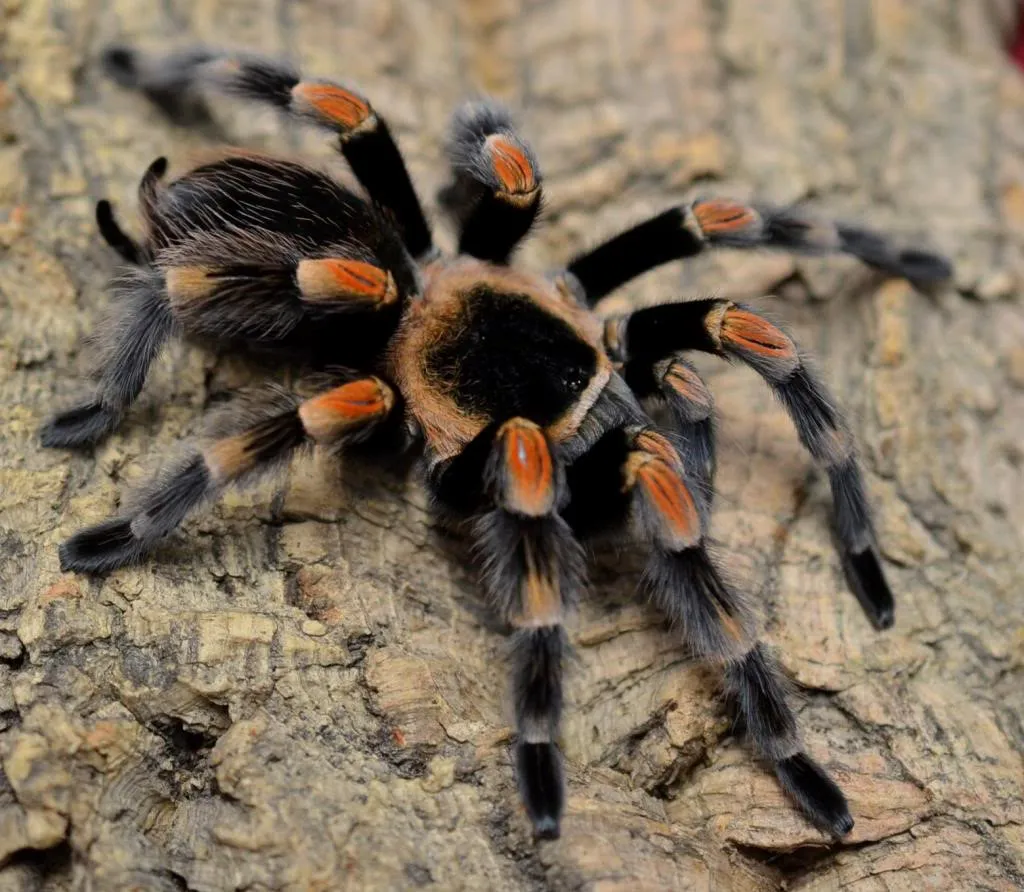The Mexican Red Knee Tarantula (Brachypelma hamorii) is a captivating creature, a popular choice among tarantula enthusiasts. Known for its striking appearance and relatively docile nature, this species has become a staple in the exotic pet trade. However, before you decide to bring one of these fascinating spiders into your home, it’s crucial to understand the financial commitment involved. This guide provides a comprehensive overview of the Mexican Red Knee Tarantula’s cost, helping you make an informed decision. We’ll delve into the factors influencing the price, where to buy, and what to expect in terms of ongoing expenses, ensuring you are well-prepared to provide the best possible care for your new pet.
What is a Mexican Red Knee Tarantula?
The Mexican Red Knee Tarantula is a terrestrial tarantula species, easily identifiable by its black body and vibrant red-orange markings on its leg joints. They are native to the Pacific coast of Mexico, specifically in the states of Guerrero and Michoacán. These spiders are relatively slow-growing and can live for several years, with females often outliving males. Their gentle temperament and striking appearance make them a favorite among beginner and experienced tarantula keepers alike. They are relatively easy to care for compared to some other tarantula species, making them an attractive option for those new to the hobby. Understanding their basic characteristics is key to understanding the costs associated with owning one.
Appearance and Characteristics
Mexican Red Knee Tarantulas are easily recognizable due to their distinct appearance. Their bodies are covered in dark brown or black hairs, providing a stark contrast to the vibrant red-orange bands on their leg joints. These bands are the namesake of the species, giving it a visually appealing look. They possess a large, hairy body, with females typically growing larger than males. Mature females can reach a leg span of up to 6 inches or more, while males tend to be slightly smaller. Their overall appearance is robust, with a powerful build suited for their terrestrial lifestyle. The vibrant colors and impressive size contribute to their popularity as a pet.
Origin and Habitat
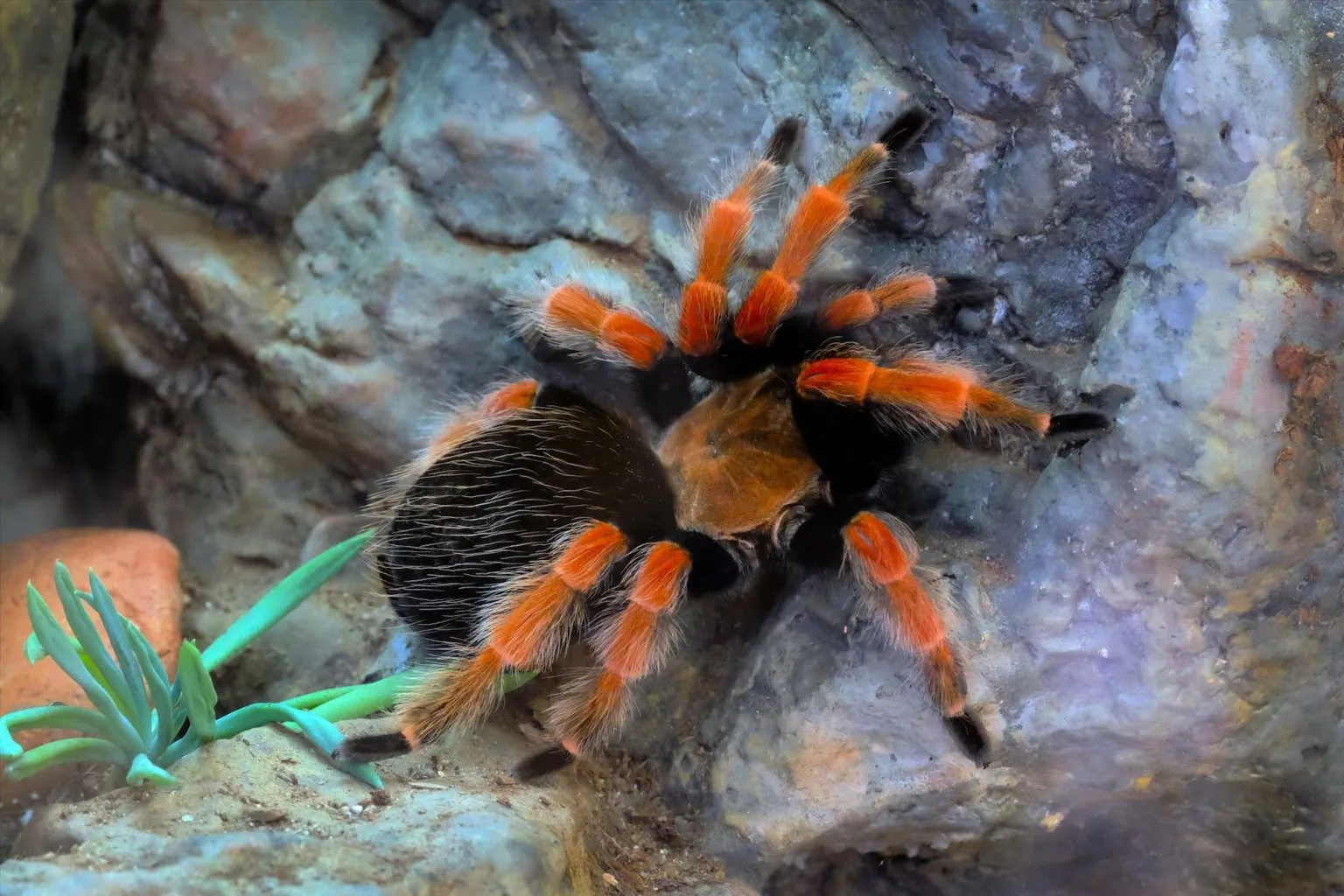
In their natural habitat, Mexican Red Knee Tarantulas are found in the arid scrublands and tropical deciduous forests of the Pacific coast of Mexico. They are burrowing spiders, spending much of their time in underground burrows, which they create for shelter and protection. The burrows provide a stable microclimate, helping to regulate temperature and humidity. These tarantulas are well-adapted to their environment, where they hunt insects and other small invertebrates. Their habitat is characterized by dry conditions and a seasonal climate. Replicating their natural environment is important for their well-being when kept in captivity. Understanding their origins helps to create a suitable environment, which in turn can influence the overall cost of care.
What Factors Affect the Cost of a Mexican Red Knee Tarantula?
Several factors influence the price of a Mexican Red Knee Tarantula. Understanding these can help you find the best deal and know what to expect. Factors include age, size, coloration, and any unique morphs or variations. These factors directly affect the value and, consequently, the initial purchase price. The demand and availability also play a significant role in determining the market price. The cost is not just about the spider itself; it’s also about the genetics and health of the tarantula. This initial cost is just one aspect of the financial commitment; ongoing costs for their care also need consideration.
Age
Younger tarantulas, or spiderlings, are typically less expensive than older, more mature specimens. This is because spiderlings are smaller and require less space and food, making their initial cost lower. However, they are also more fragile and require more careful handling and monitoring. As tarantulas mature, their value tends to increase, especially for females, which have a longer lifespan and are more desirable for breeding. The age of a tarantula is a significant factor in its cost and the overall experience of keeping them. The long-term commitment should be considered, as older tarantulas have already survived potential issues that younger ones still face.
Size

The size of the tarantula is directly related to its age and typically affects its price. Larger tarantulas, which are usually older, tend to be more expensive. This is because they are closer to their adult size and are already established in terms of feeding and growth. The size is a visual indicator of the tarantula’s maturity and overall health. It also influences the size of the required enclosure, adding to the initial setup cost. The size of a tarantula affects the visual appeal, and experienced keepers often prefer larger specimens due to their more impressive appearance. Keep this in mind when balancing your budget with your desire for a specific tarantula.
Coloration
While all Mexican Red Knee Tarantulas have the distinctive red-orange markings on their leg joints, the intensity and quality of the coloration can vary. Some tarantulas may exhibit more vibrant or pronounced colors, which can increase their value. Breeders sometimes select for enhanced coloration, resulting in higher prices for these specimens. Coloration can be a significant factor for tarantula enthusiasts who are looking for a visually stunning pet. The overall health and genetics of the tarantula contribute to the intensity of its colors. These characteristics can make a noticeable difference in the initial cost.
Morphs
Like other animals, Mexican Red Knee Tarantulas can exhibit different morphs or variations in their appearance. These can include variations in color patterns, size, or other physical traits. Morphs are often the result of selective breeding and can be highly sought after by collectors. The rarity and uniqueness of a specific morph can significantly impact its cost. If you are interested in something beyond the standard appearance, you should expect to pay more for a spider with unique traits. The popularity of these morphs adds to the excitement and interest in the tarantula-keeping hobby.
Where Can You Buy a Mexican Red Knee Tarantula?
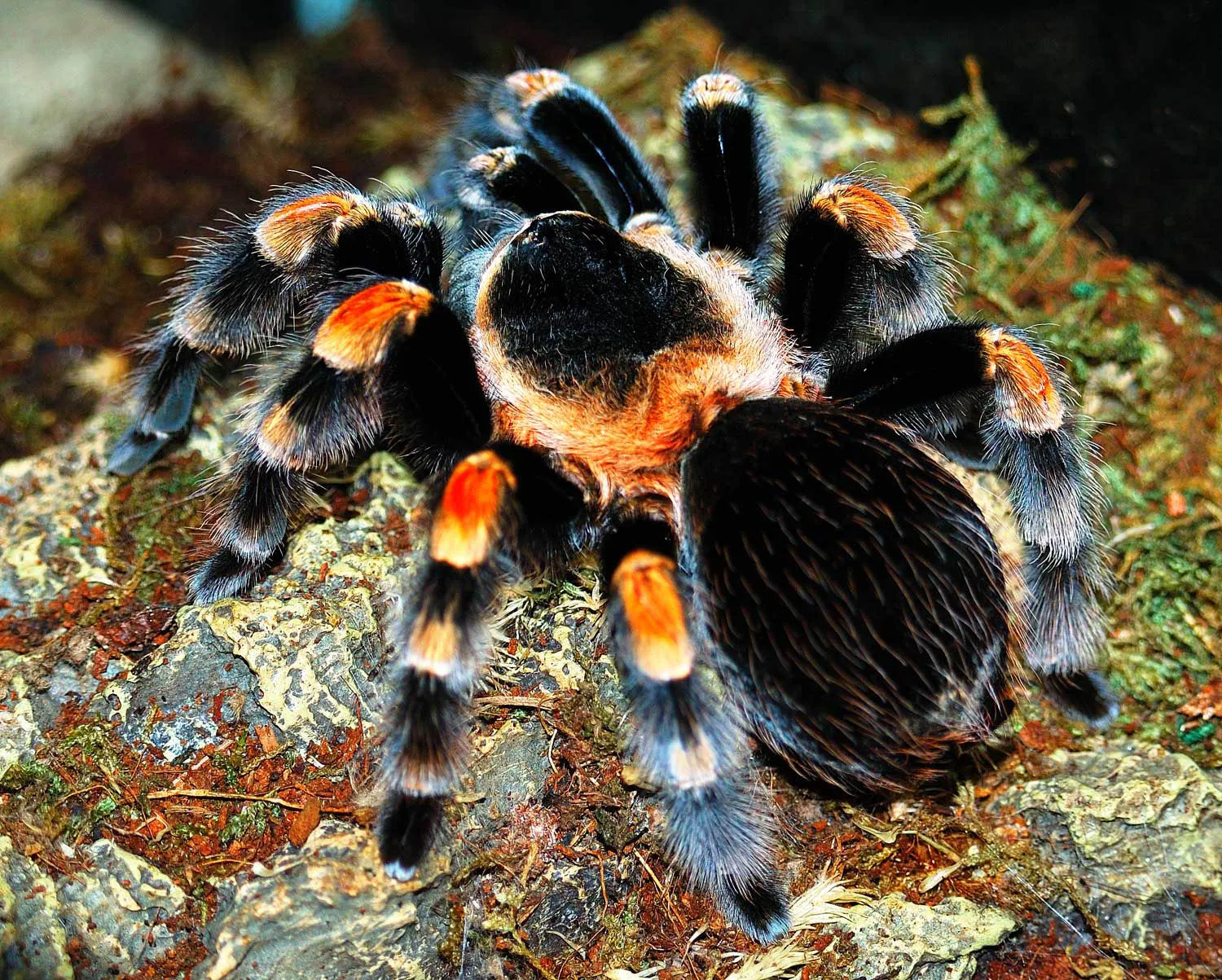
Mexican Red Knee Tarantulas can be purchased from various sources, each offering different price points and levels of service. The choice of where to buy will influence the overall cost and the quality of the tarantula. Each source carries its own advantages and disadvantages, which can significantly impact the buying experience. Researching different options is key to finding a healthy tarantula at a fair price. Thoroughly checking different sellers’ reputations is a must, ensuring that you get a healthy specimen from a trustworthy source, avoiding unnecessary expenses later on.
Pet Stores
Pet stores are a convenient option for purchasing a Mexican Red Knee Tarantula. They often carry a variety of tarantulas and supplies, making it a one-stop shop for beginners. However, pet stores may have higher prices compared to other sources. This is due to overhead costs, including rent, employee wages, and inventory management. The staff may not always be tarantula experts, so the information provided might be limited. Always assess the tarantula’s health before making a purchase, checking for any signs of illness or poor care. If you do choose a pet store, verify their reputation and ask questions about the tarantula’s origin and care history.
Breeders
Purchasing a Mexican Red Knee Tarantula directly from a breeder can be a good choice. Breeders often have more experience and knowledge, providing detailed information about the tarantula’s lineage, age, and care requirements. They can provide guidance on proper care and are usually more invested in the well-being of their tarantulas. Breeders tend to be more knowledgeable about the tarantulas and can also offer healthier specimens. The prices from breeders can vary, but they are often competitive, since they cut out the middleman. Buying from a reputable breeder reduces the risk of getting a sick or poorly cared-for tarantula. It’s recommended to research breeders thoroughly before making a purchase.
Online Marketplaces
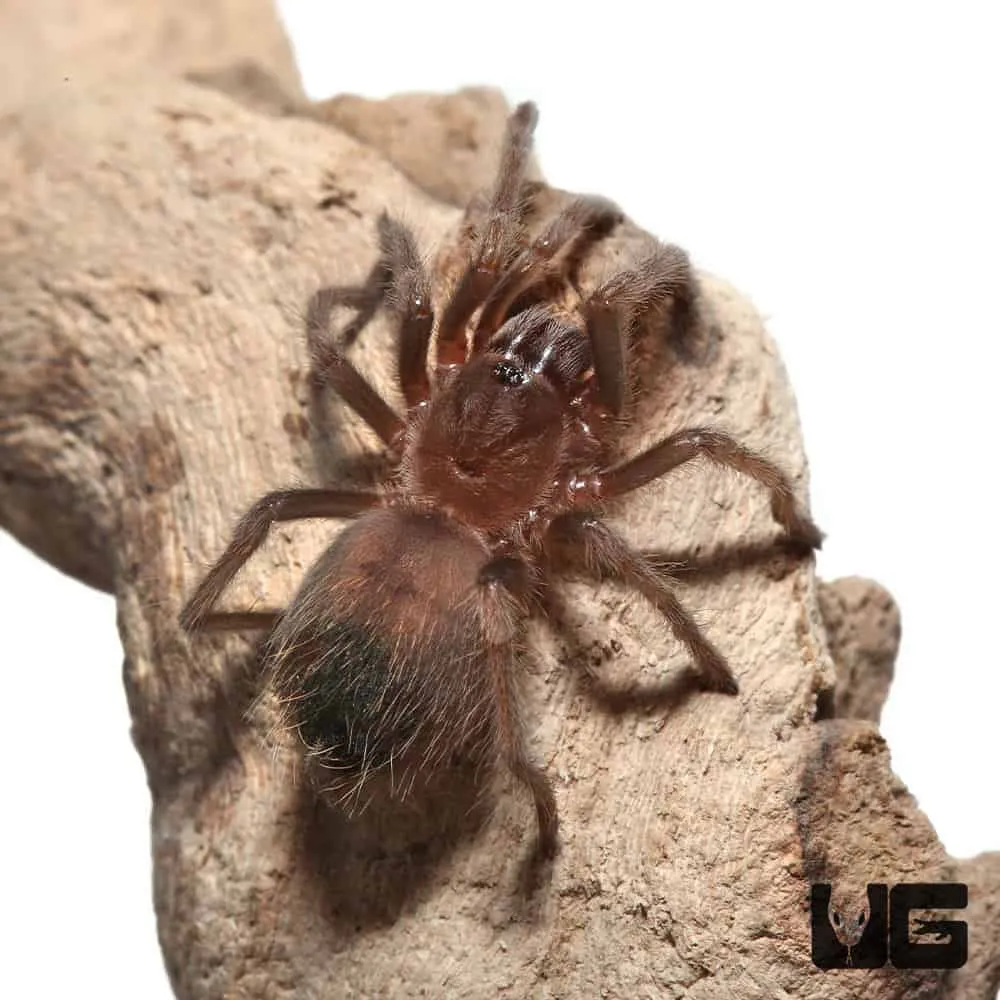
Online marketplaces offer a vast selection of Mexican Red Knee Tarantulas from various sellers, including breeders and individual owners. This can provide competitive pricing and access to a wider variety of tarantulas. However, it’s essential to exercise caution when buying online. Verify the seller’s reputation by reading reviews and checking feedback. Request clear photos and videos of the tarantula to assess its health and condition. Ensure the seller provides a safe shipping method that is specifically designed for tarantulas. There is a greater risk involved, so due diligence is essential to ensure a successful and healthy purchase, avoiding a negative impact on your initial investment.
Average Cost of a Mexican Red Knee Tarantula
The average cost of a Mexican Red Knee Tarantula can vary depending on several factors, including the tarantula’s age, size, and the source of purchase. Spiderlings are typically less expensive, ranging from $20 to $50. Juvenile tarantulas may cost between $50 and $100, while mature adults can range from $75 to $150 or more. Rare morphs or exceptionally colored specimens can command higher prices. Prices also fluctuate based on supply and demand. The best way to find out the average cost is to research different sellers. Understanding the factors that influence the price will help you determine what you should expect to pay for a healthy tarantula.
What Additional Costs Should You Expect?
Beyond the initial purchase price of the tarantula, you will need to factor in several additional costs associated with its care. These ongoing expenses are essential for the tarantula’s well-being. Planning for these costs is crucial to being a responsible pet owner. The right setup is key to creating a safe and comfortable environment for your tarantula. You must also provide proper nutrition and, if necessary, veterinary care. These costs can add up over time, so it’s important to create a budget to cover all essential aspects of tarantula care, ensuring your pet remains healthy and happy.
Enclosure and Supplies
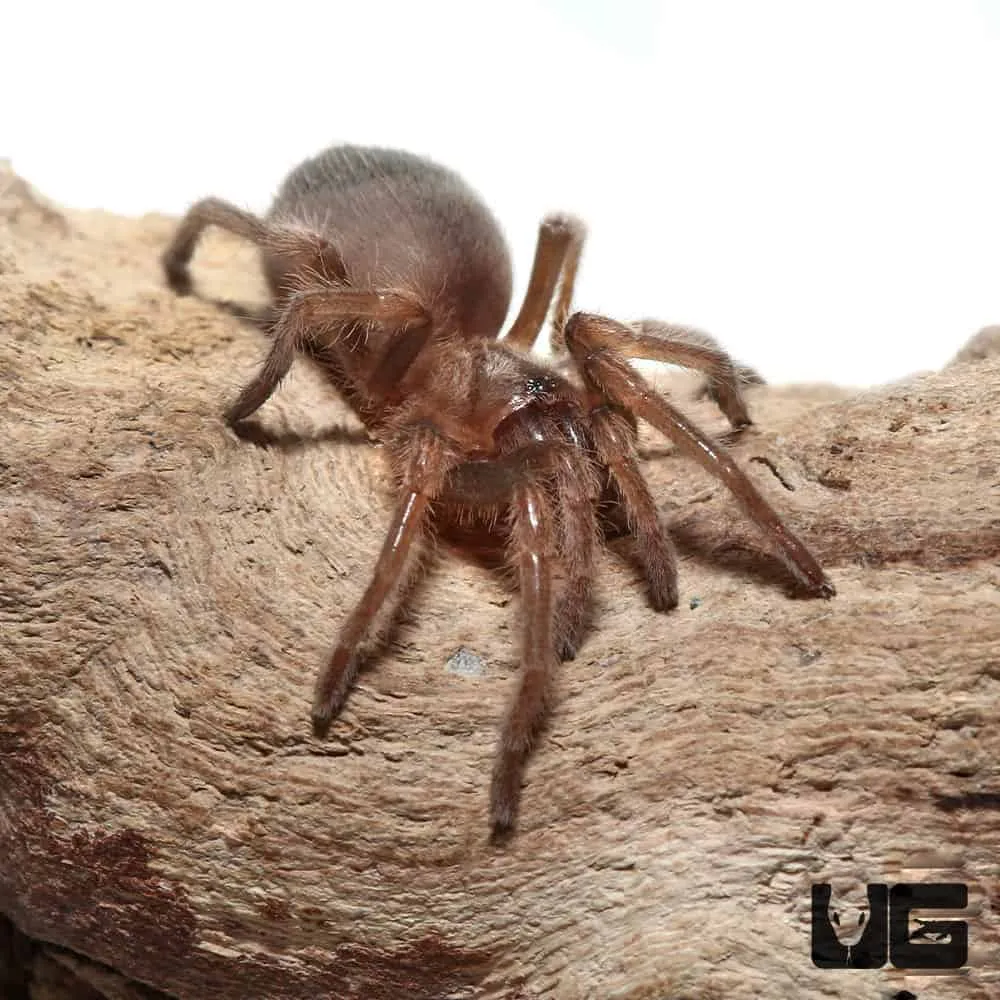
The initial setup for a Mexican Red Knee Tarantula requires an enclosure, substrate, decorations, and other supplies. The size of the enclosure will depend on the tarantula’s size, with larger tarantulas needing more space. Suitable substrates include coconut fiber, peat moss, or a mixture of both. Decorations, such as hides, branches, and artificial plants, provide enrichment and create a more natural environment. The cost of the enclosure and supplies can range from $50 to $200 or more, depending on the size and complexity of the setup. Regular replacement of substrate and any necessary upgrades to the enclosure are also ongoing costs that should be considered. The right setup is key to a happy and healthy tarantula.
Food
Mexican Red Knee Tarantulas primarily eat insects, such as crickets, mealworms, and roaches. The cost of food can vary depending on the source and the quantity purchased. Live insects are usually purchased from pet stores or online suppliers. The cost of food depends on the size of the tarantula and the amount it eats. For spiderlings, the cost of food is relatively low. However, as the tarantula grows, its appetite increases. This can be a significant ongoing expense over the tarantula’s lifespan. Regular feeding is crucial for the tarantula’s growth and development. The cost of food should be a part of your budget considerations.
Veterinary Care
While Mexican Red Knee Tarantulas are generally hardy, they can still experience health problems. Veterinary care for tarantulas can be expensive. This is because not all veterinarians are experienced with exotic pets. If you notice any signs of illness or injury, it’s essential to seek veterinary care immediately. The cost of a consultation, examination, and any necessary treatments can vary. Finding a vet that specializes in exotics before getting the tarantula is a great idea. Preventative care, such as providing a suitable environment and proper nutrition, can help to minimize the risk of health problems. This can significantly reduce potential veterinary costs. Being prepared for this scenario is part of responsible pet ownership.
How to Save Money on a Mexican Red Knee Tarantula
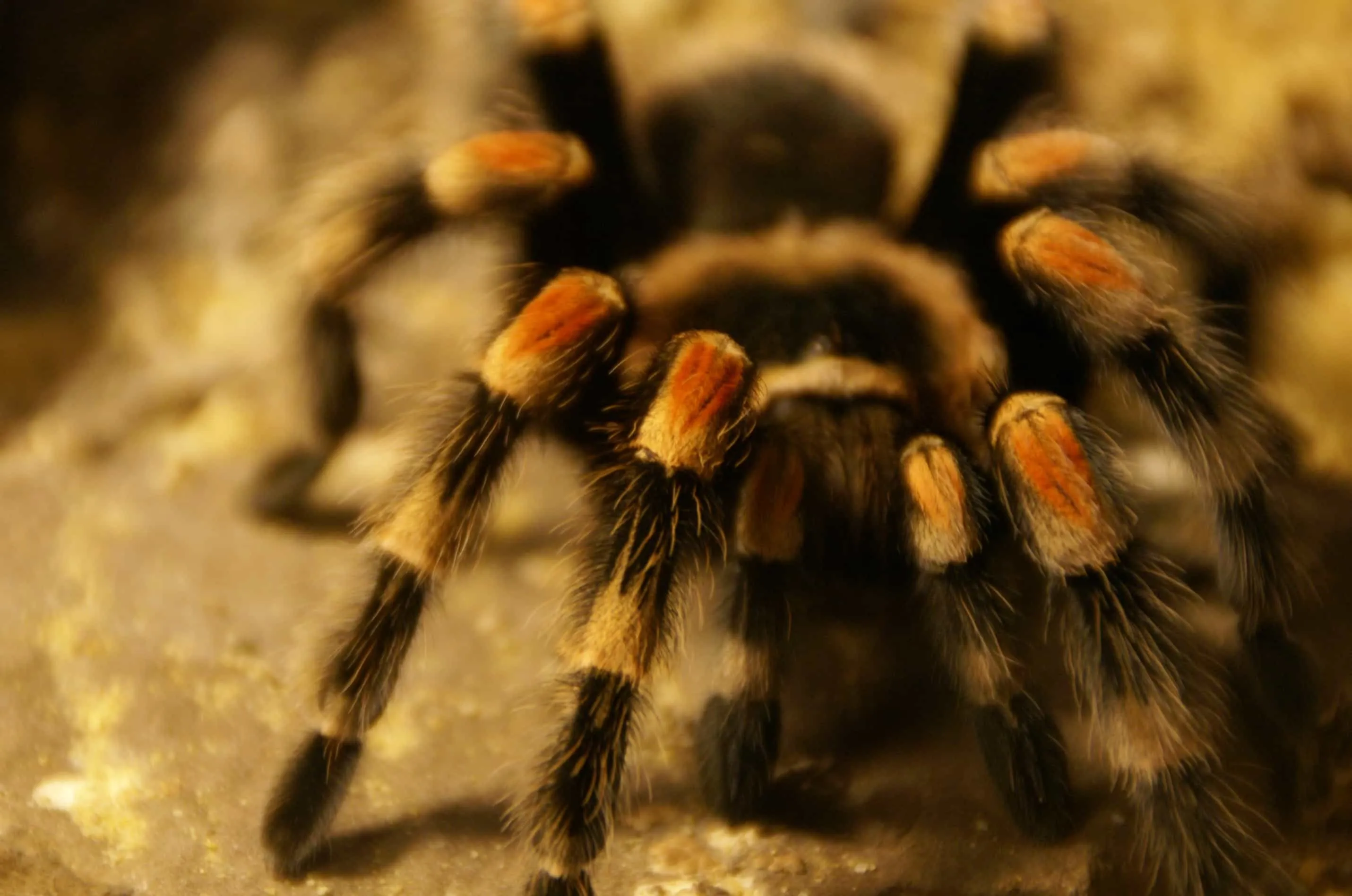
There are several strategies you can use to minimize the cost of owning a Mexican Red Knee Tarantula. Careful planning and smart shopping can help you save money without compromising your tarantula’s care. By making informed decisions about the purchase and ongoing expenses, you can make tarantula keeping more affordable. Considering these tips can make a difference in the overall cost of ownership.
Research and Compare Prices
Before buying a Mexican Red Knee Tarantula, research and compare prices from different sources. Check pet stores, breeders, and online marketplaces to find the best deal. Pay attention to the tarantula’s age, size, and health. Do not solely focus on the lowest price. The reputation of the seller is also very important. Reading reviews and checking the seller’s history can also help you avoid potential issues. Price comparison combined with quality assessment will help you make a good decision. Comparing prices will help you make a good decision.
Consider the Tarantula’s Age
Spiderlings are generally less expensive than adult tarantulas. If you are on a budget, consider starting with a spiderling. You will save money on the initial purchase. Be aware that spiderlings are more fragile and require a higher level of care. They may also take longer to mature. As they grow, they will require larger enclosures and more food. The age of the tarantula will also affect the cost of ownership over its lifespan. The initial lower cost can be balanced by the lower costs of food and enclosure for the first few months.
Buy Supplies in Bulk
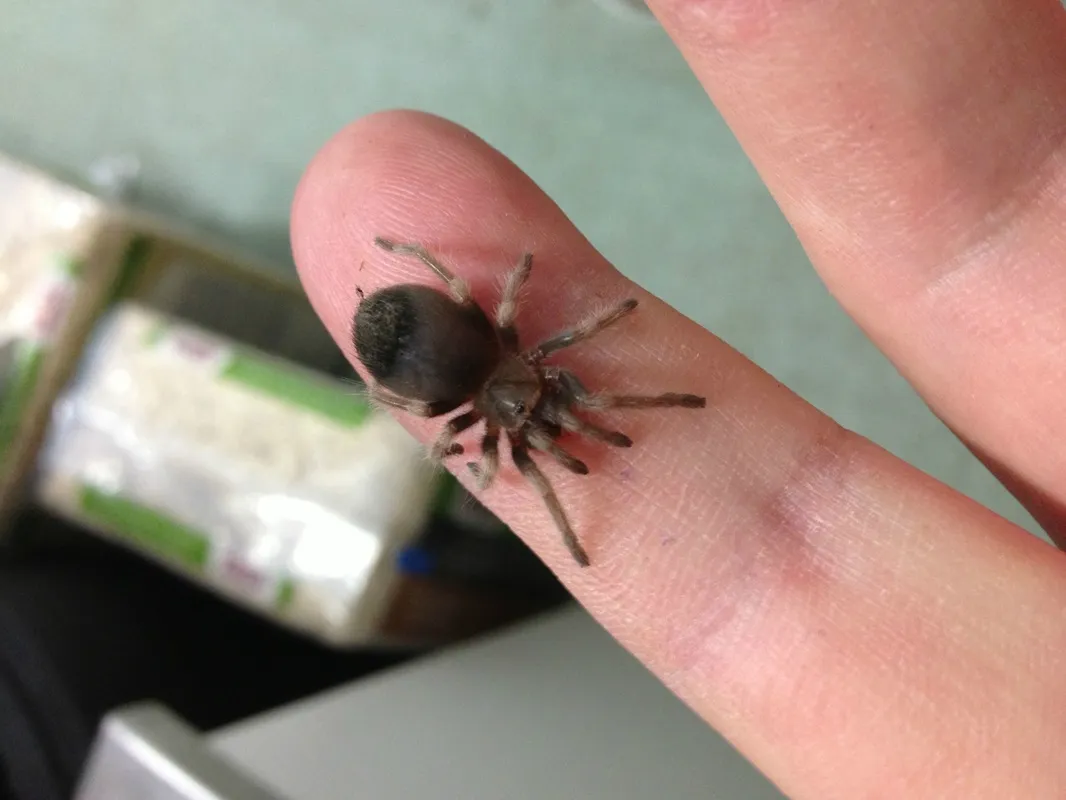
Purchasing supplies, such as substrate and food, in bulk can save money in the long run. This is especially true for items that you will need to restock regularly. Buying in bulk can also help you ensure you always have enough supplies on hand. Compare prices per unit to get the best value. You will also save on shipping costs when buying larger quantities. Buying in bulk is particularly effective if you are planning to own multiple tarantulas. It allows for better financial management.
Is a Mexican Red Knee Tarantula Right for You?
Before acquiring a Mexican Red Knee Tarantula, it’s important to assess whether it’s the right pet for you. Consider your lifestyle, living situation, and financial resources. Tarantulas require specific care, including providing a suitable environment and proper feeding. They also need regular monitoring. If you are prepared to commit to providing proper care, a Mexican Red Knee Tarantula can be a rewarding pet. Evaluate your ability to handle potential vet expenses and ensure you have the time and resources. Ensure you understand the costs and responsibilities to provide the best care for your tarantula. Owning a tarantula is a long-term commitment that requires proper planning.
In conclusion, the cost of a Mexican Red Knee Tarantula extends beyond the initial purchase price. Understanding the factors that affect the cost, including age, size, and source, is essential for making an informed decision. Remember to factor in ongoing expenses, such as enclosure, food, and veterinary care. By researching and comparing prices, you can find a tarantula that fits your budget. Finally, ensure you are prepared to provide the necessary care and commitment to ensure the health and well-being of your new pet. Owning a Mexican Red Knee Tarantula can be a rewarding experience for those who are prepared to meet its needs.
